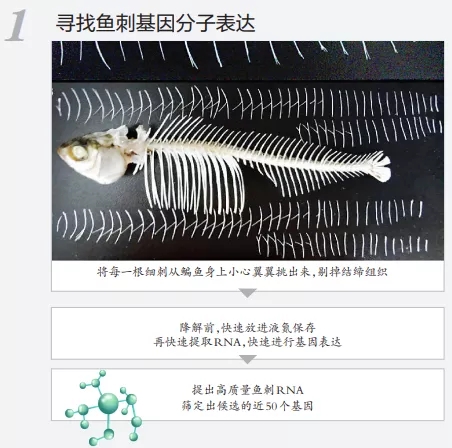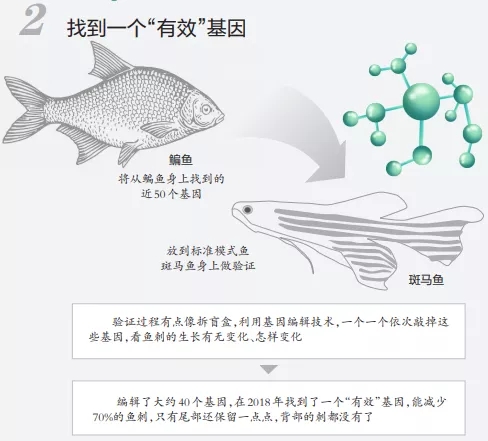Recently, the Huazhong Agricultural University team found the gene that controls the growth of fish bones. The news that we will have the chance to eat spineless fish has quickly attracted widespread attention.
The team of Professor Gao Zexia from the College of Fisheries and the team of Academician Gui Jianfang from the Institute of Hydrobiology of the Chinese Academy of Sciences have tested knocking out the main genes that control the growth of fish bones in bream, grass carp and pond crucian carp and produced the first-generation (F0) spineless fish that turn out to grow well with normal form and structure and the same habits as those of ordinary fish.

The team of Gao studying the fish bones
The news soon stirred many foodie netizens’ DNA: “Sincere gratitude to the researchers for bringing benefits to foodies”, “Fish without bones are my favorite”. Some netizens came up with bolder ideas: “Is it possible to have headless crayfish?” The College of Fisheries responded that the head is indispensable, but studies can be conducted to make the tail bigger. “First consider how to breed shrimps without shrimp lines!”
As for whether it will affect fish’s swimming ability or not, the College of Fisheries said, “Don’t worry about it!”
Behind the “foodie welfare” is the trial and research of scientific researchers day after day. On December 18, Prof. Gao Zexia talked about the ins and outs of the “Spineless Fish”.
Three months of removing fishbone produced the first domestic patent in fishbone research
Fishbone is scientifically called intermuscular bone, which is derived from the ossification of the tendon in the diaphragm. Fish bones grow in the same way as human bone spurs. Fish bones are a trouble for eaters, and also an obstacle to large-scale mechanized processing.
In 2012, Gao Zexia, who had just obtained her Ph.D. degree, chose the subject of making bream spineless. She said that the key to creating a thornless fish is to find the gene that regulates the growth of the bone (main gene).

This is a whole new field. They carefully picked out each thorn from the fish, removed the connective tissue, and quickly put it in liquid nitrogen for storage before degrading, and then quickly extracted RNA to perform gene expression. Although most steps had to be finished in a blink, it took the entire team three months to get high-quality fishbone RNA. They finally screened out nearly 50 genes as candidates.

The “bone picking” procedure is so professional and accurate that it has improved the method of extracting RNA and produced the world’s first comprehensive fishbone gene expression. Gao Zexia, therefore, applied for the first domestic patent in the fishbone research.
Studying for 7 years–fish bones have changed, not flesh of fish
Professor Gao Zexia’s team tested the nearly 50 genes on standard model fish– zebrafish for verification, and used gene editing technology to knock out these genes one by one to see if there was any change in the growth of the fish bone and how it changed. Such studies lasted for 7 years.

One day at the end of 2019, “suddenly”, the main gene appeared-this time it was really spineless zebrafish. The phenotype of hundreds of fish remained very stable, and after several generations of breeding, the offspring were also spineless fish. They can be sure that what they found is the main gene, which is a common gene contained in all normal fish.
After testing, although the fish bones have changed, the amino acid and fatty acid content in the fish meat are not significantly different from those of ordinary fish, and the meat quality remains unchanged.

At present, the first generation of heterozygous (F0 generation) spineless fish grows well with a normal shape. Wuhan bream matures every two years, crucian carp every year, and then these mature heterozygous spineless fish are purified and reproduced for one generation. By the third generation (F2), we can harvest the real spineless fish with stable genetic traits of homozygote.
Are you excited about spineless fish?
Source: http://news.hzau.edu.cn/2021/1224/62372.shtml
Translated by: Duan Jun
Supervised by: Xie Lujie
